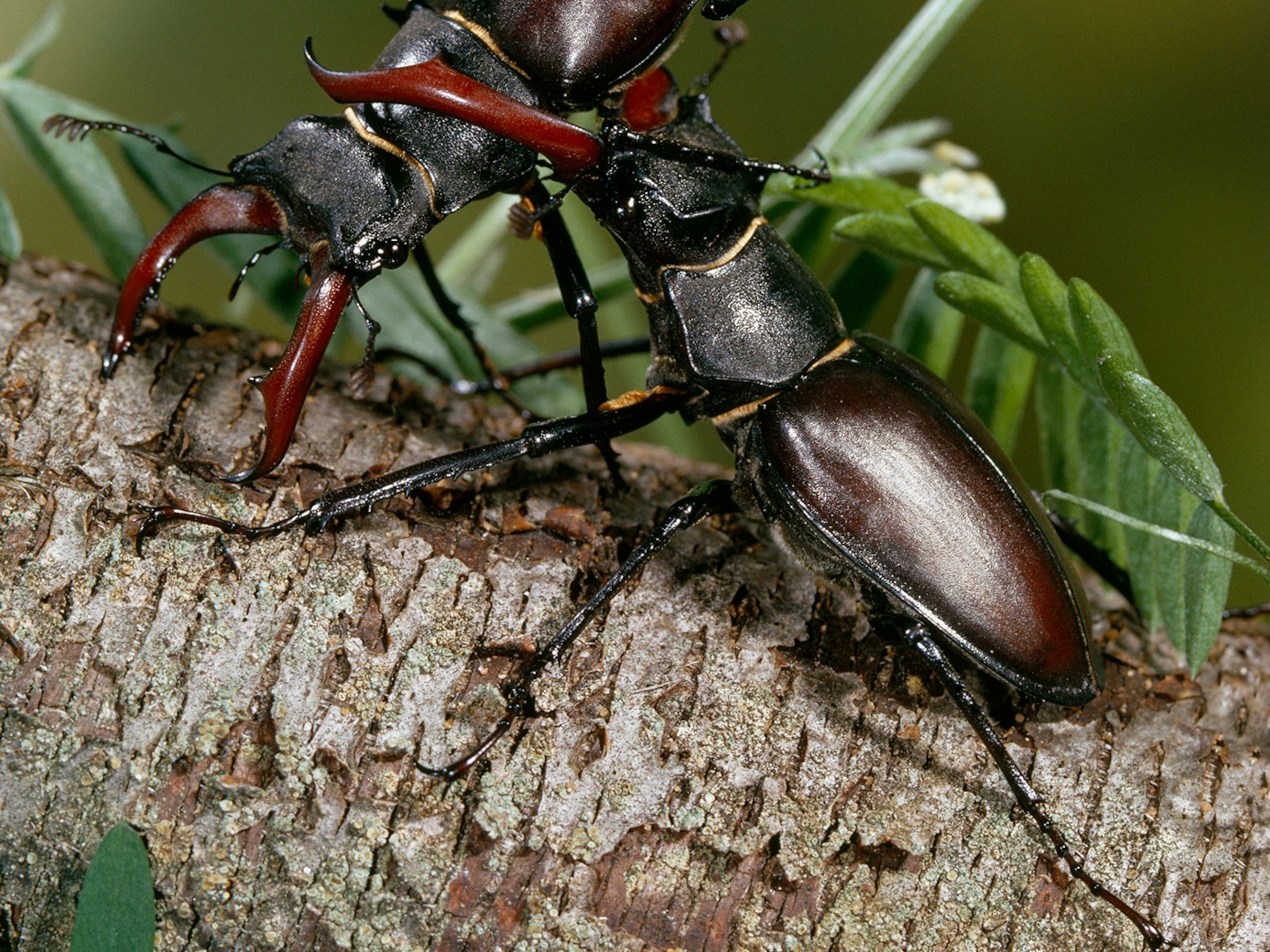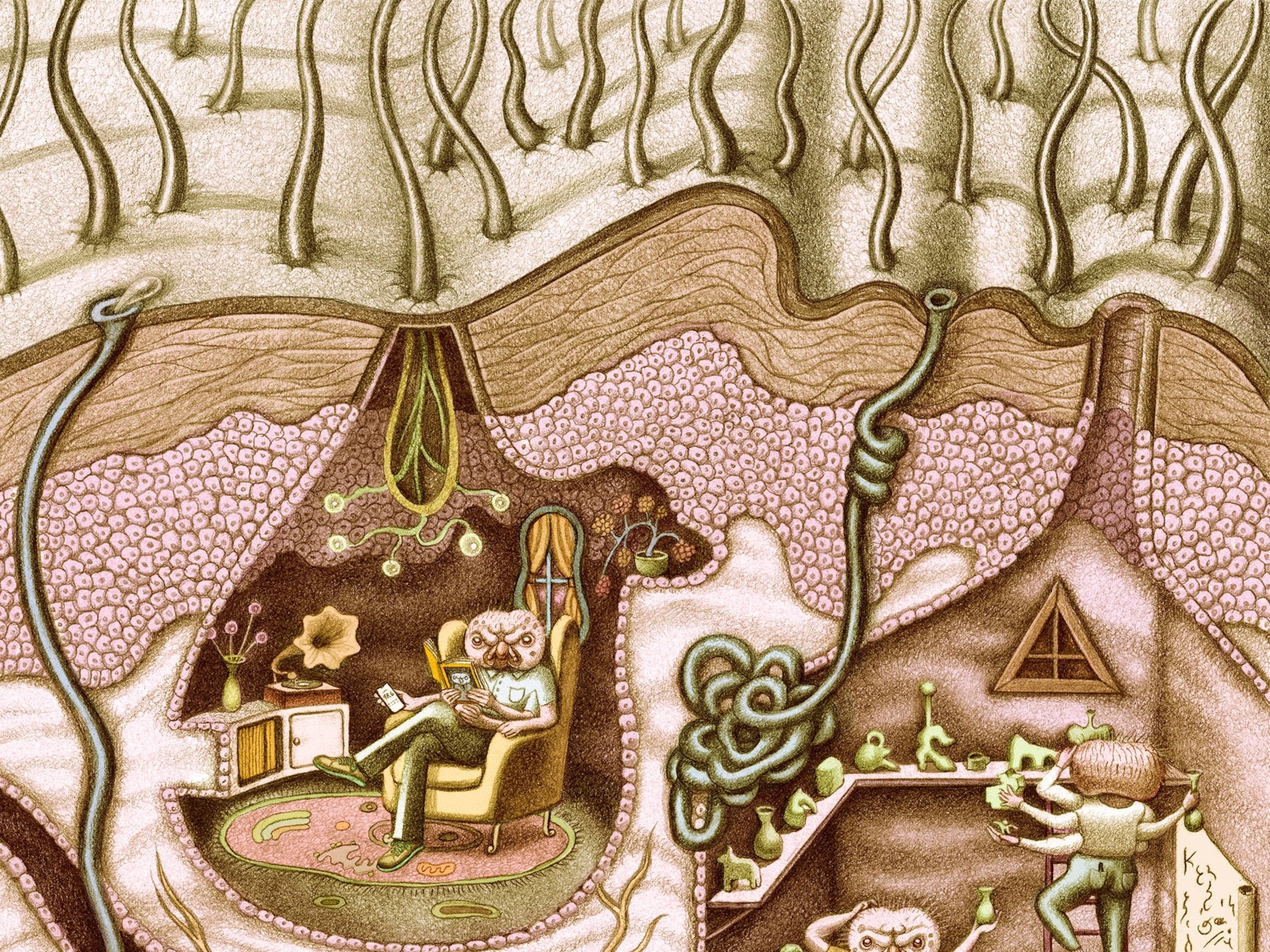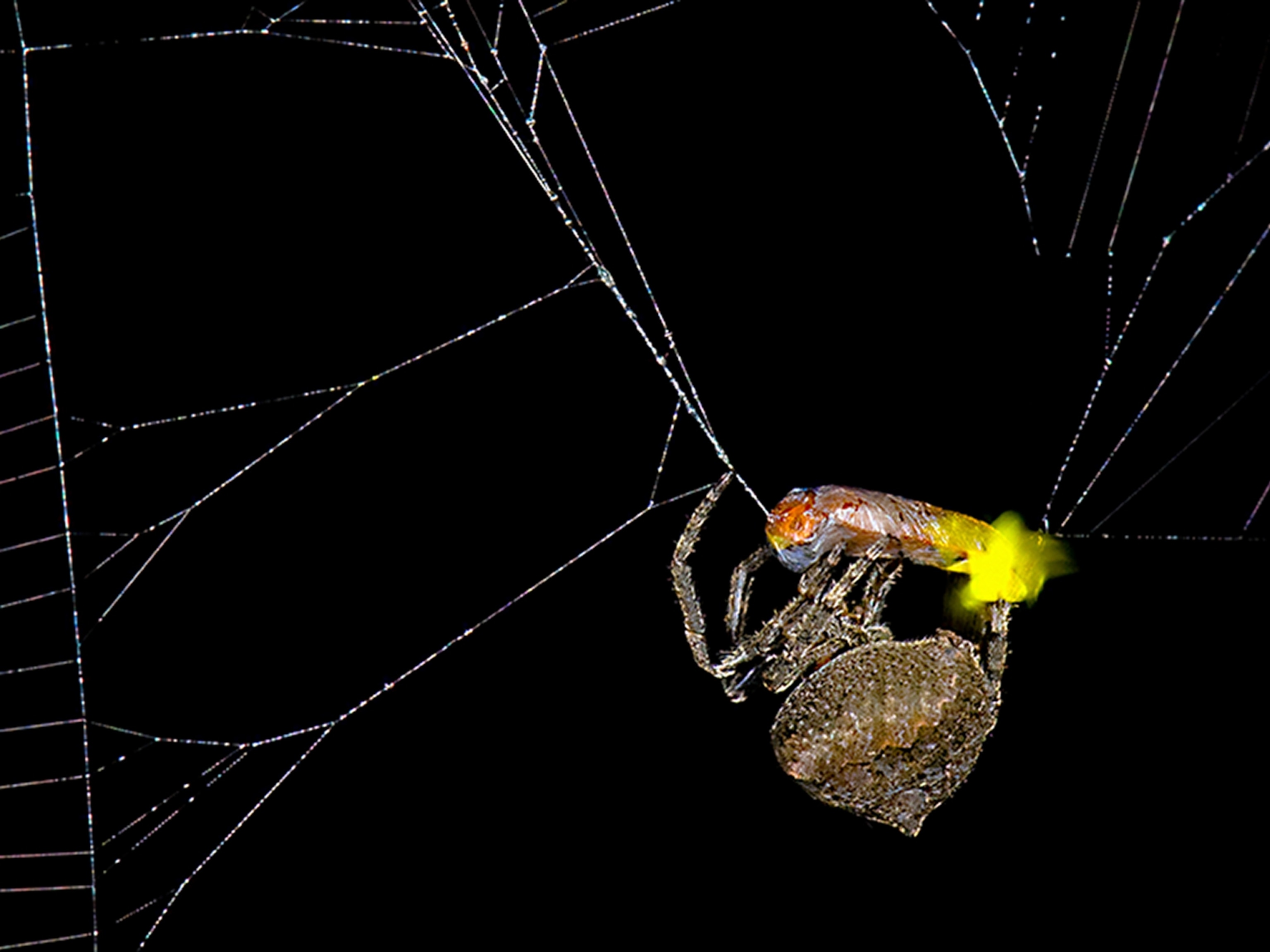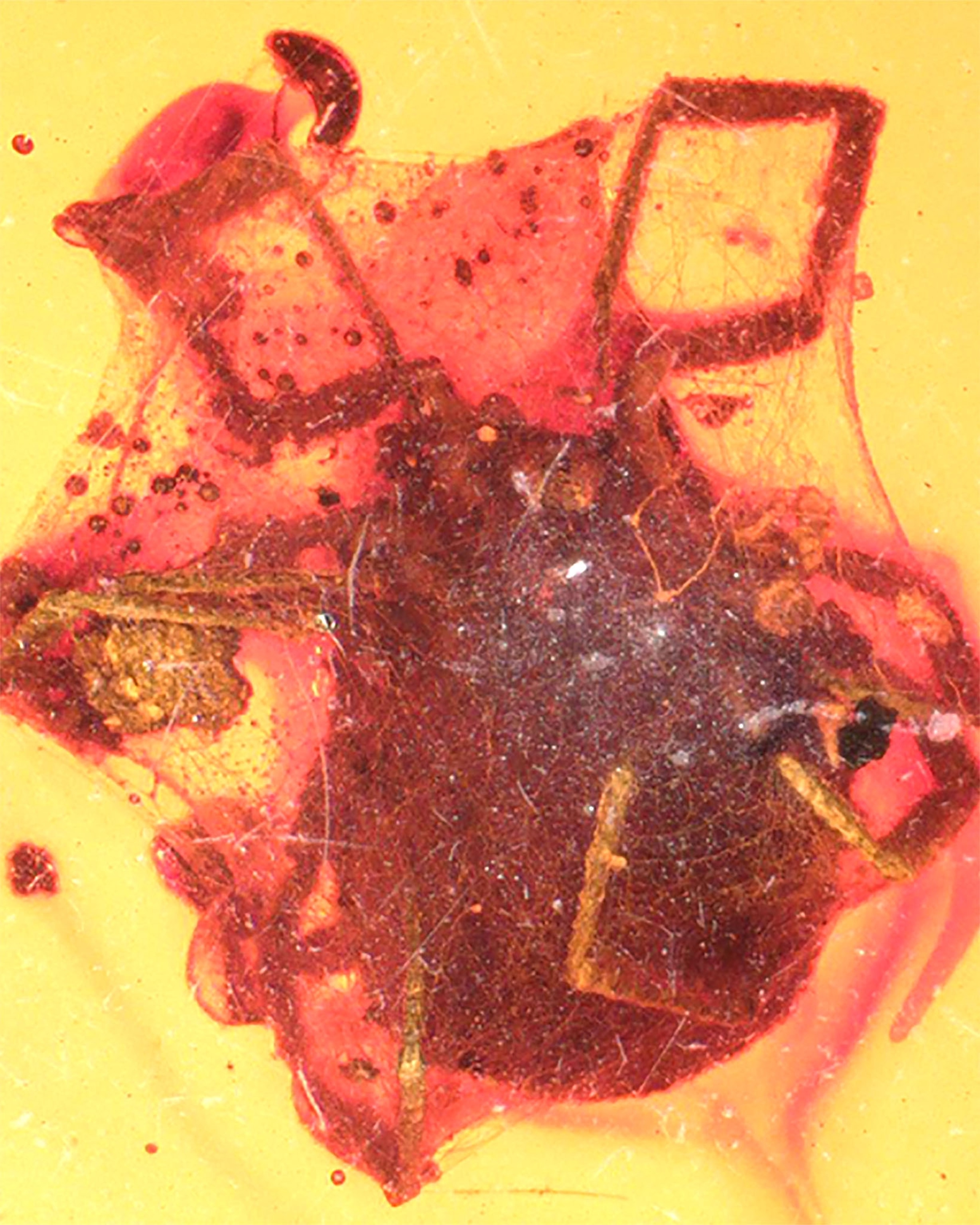
Tick Wrapped in Spider Silk Found Trapped in Amber—A First
The unlucky creature is now a boon to scientists studying the evolution of arachnid behavior.
Some 99 million years ago in what's now northern Myanmar, a tick enjoyed a spectacular bout of bad luck.
Normally, the tick would have been hiding in vegetation, hoping to latch onto a small mammal or a feathered dinosaur to suck its blood. But this tick somehow fell into a spider web, and the resident spider promptly straitjacketed its arachnid cousin in loops of silk, either to save it as a snack or to immobilize it as a precaution.
We know this because the tick's day got even worse. As it strained to free itself, the ancient tick became enveloped in oozing tree resin—forever preserving its silken struggle in a chunk of amber.
The bizarre fossil, described in April in the journal Cretaceous Research, is the first of its kind ever found. Other amber fossils have preserved spider silk, including bits of spider webs that contain insects. But few fossil ticks have been recovered before, and none preserve evidence of spiders and ticks interacting.
“The main message is the rarity and unusualness of this discovery,” says study leader Jason Dunlop, the curator for arachnids at the Berlin Museum of Natural History.
“It is always fascinating to me to capture evidence of behavior such as prey wrapping in the fossil record,” adds Paula Cushing, an arachnologist at the Denver Museum of Natural Sciences who wasn't involved with the study.
Death Shroud
The find is the latest eye-popping fossil from Myanmar's amber mines, which have fed the jewelry trade since at least the first century A.D.
The amber is roughly 99 million years old, which makes the deposits among the world's oldest and most scientifically valuable. In the last two years alone, scientists studying Burmese amber have unveiled entire baby birds, blood-swollen ticks that may have fed on dinosaurs, and even the intact tail of a feathered dinosaur.
But accessing this amber isn't easy. Many Burmese amber mines are controlled by rebel militias in open conflict with Myanmar's military. So researchers keep an eye on the private fossil trade and are always on the lookout for scientifically valuable specimens.
The silk-wrapped tick fossil came to researchers' attention thanks to German collector Patrick Müller, who agreed to sell it to the Berlin Museum of Natural History after consulting with Dunlop on the fossil's scientific significance. Once they secured the fossil, Dunlop and his colleagues had to determine what the filaments around the tick actually were. Were they really spider silk, or were they fungi that overtook the tick's corpse?
Coauthor Lidia Chițimia-Dobler, a tick expert at the Institute for Microbiology of the Bundeswehr, helped find the answer. By studying how ticks decompose, she showed that fungi start at the tick's orifices and then spread from there. In this fossil, however, there's no fungal “ground zero” for the filaments, which instead shroud the tick exactly as you'd expect if a spider had done the wrapping.
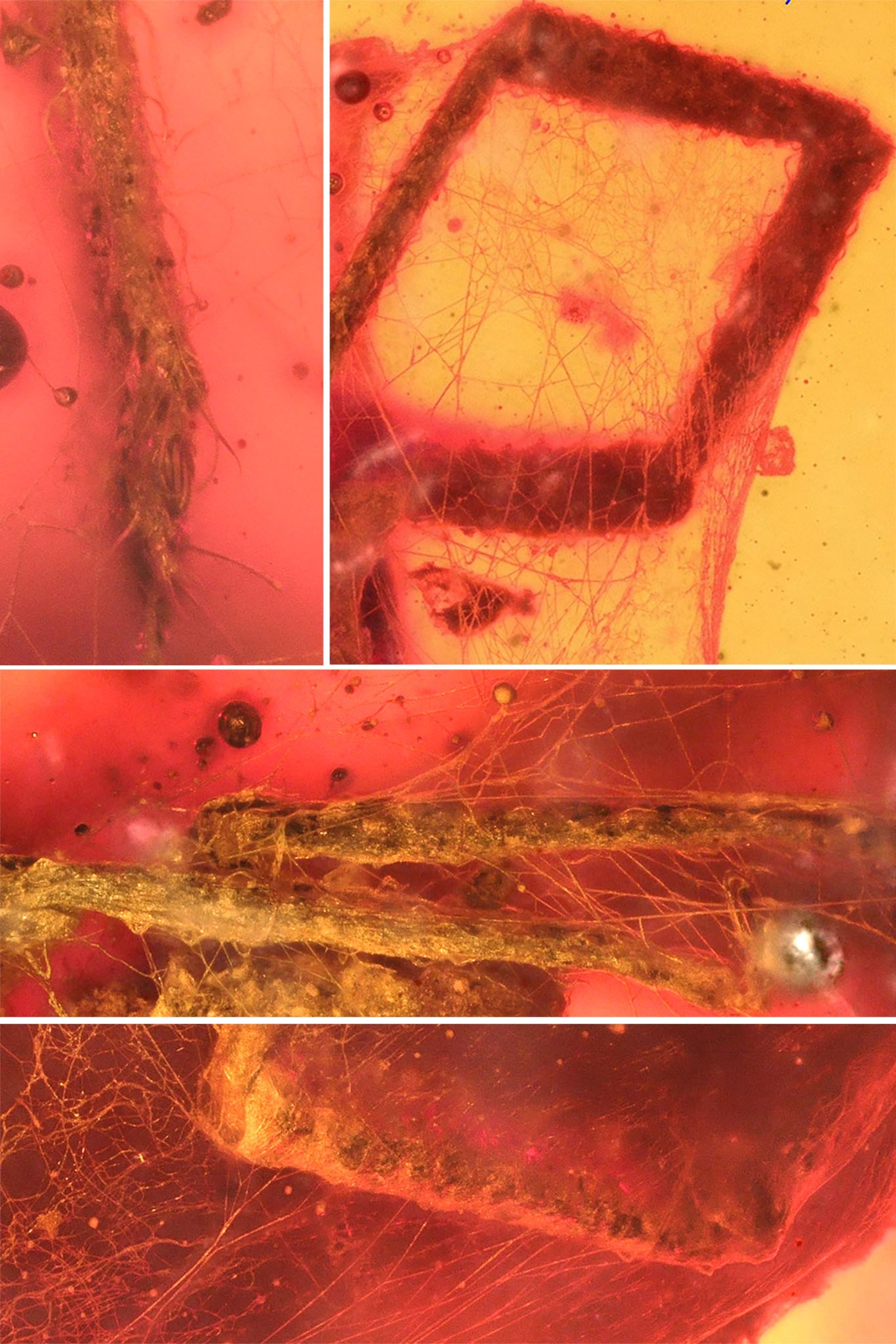
Web of Life
David Grimaldi, a paleontologist with the American Museum of Natural History, suspects that a spider intercepted the tick as it tried to feed on tree-climbing raptor dinosaurs. “It is quite likely that spider webs were close to cavities in these trees where the little raptors and their parasites resided, perhaps even stretched across nesting holes,” he says.
That said, it's unclear which kind of spider made the web. “We haven't got a huge amount of knowledge about which spiders prey on ticks, [and] those for which we have records belong to groups of spiders whose geological records don't go back that far,” says coauthor Paul Selden, a paleontologist at the University of Kansas.
"Some species of spider might be more likely to be found in amber than others," adds Selina Groh, a paleontology Ph.D. student at University College London who studies arachnids. "Their simple absence from amber does not mean they could not have been responsible for wrapping the tick."
So while we may never know which spider captured the tick, in the meantime, researchers plan to study other fossils and learn how spiders—and any prey they wrapped up—evolved.
“There's a huge number of exciting arachnids in the Burmese amber,” says Selden.

